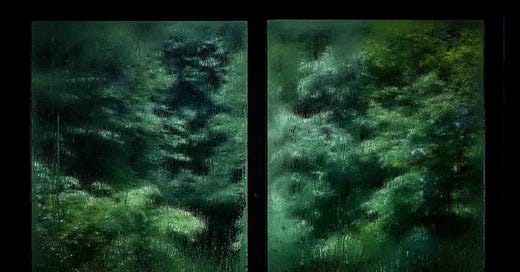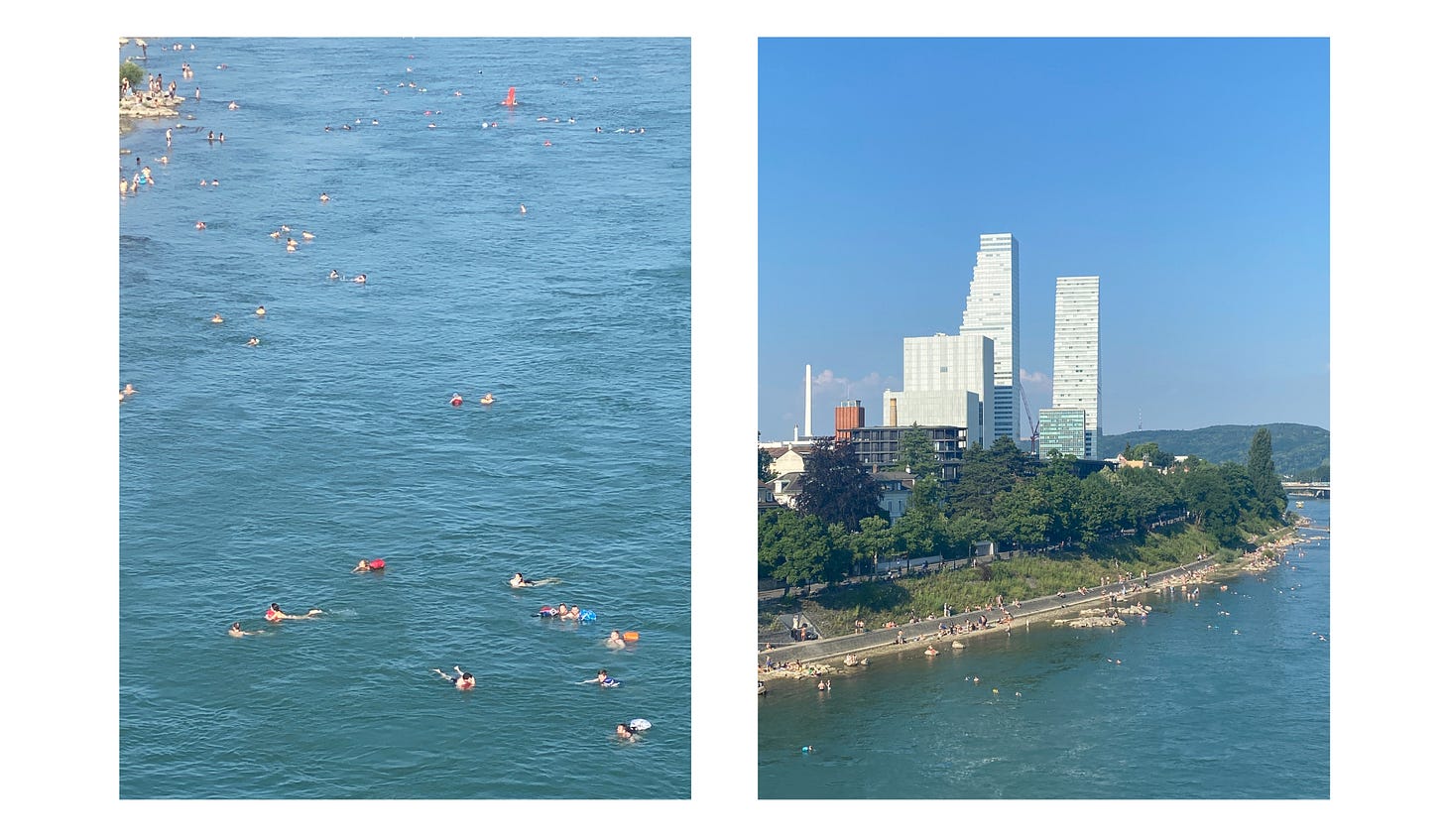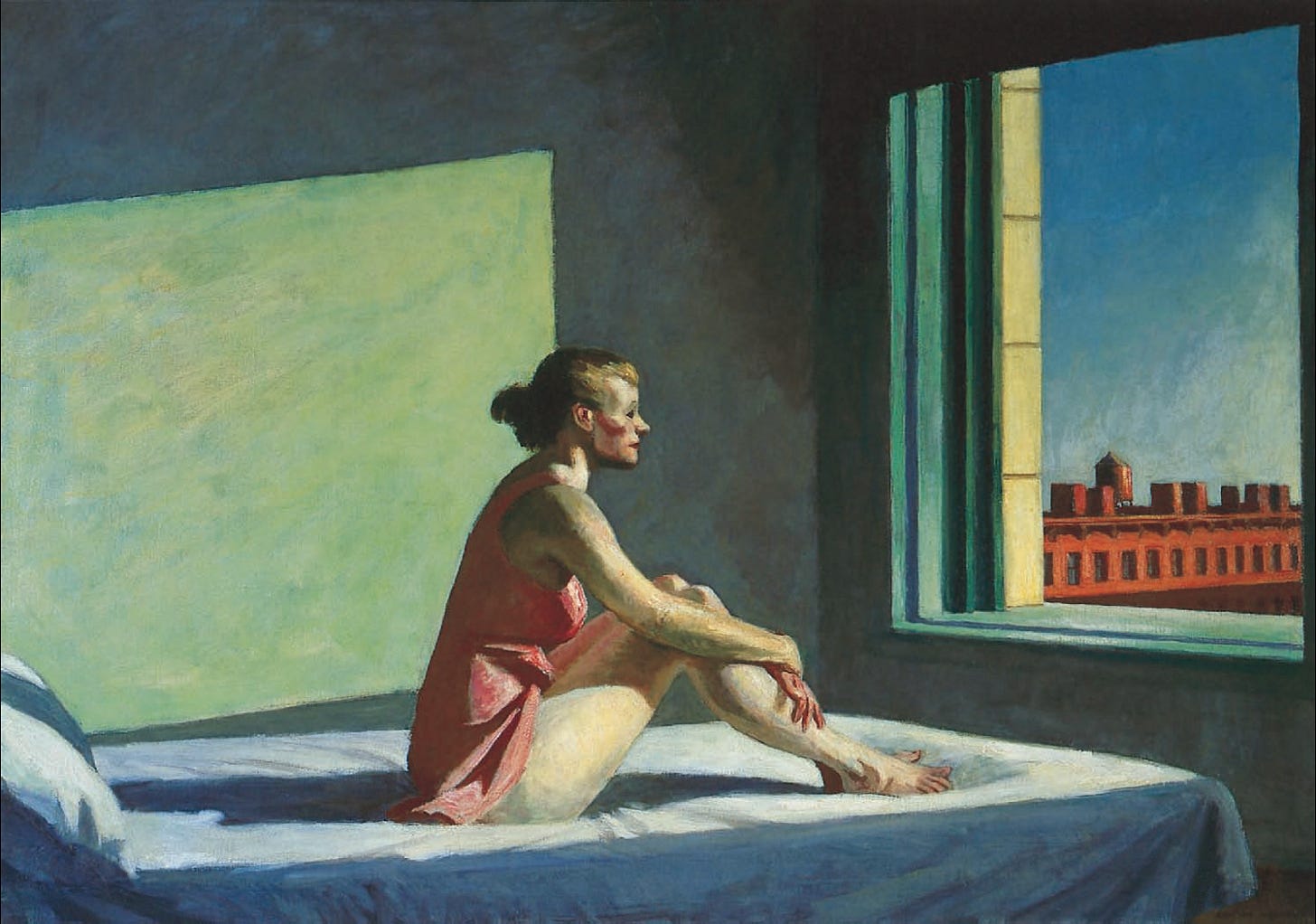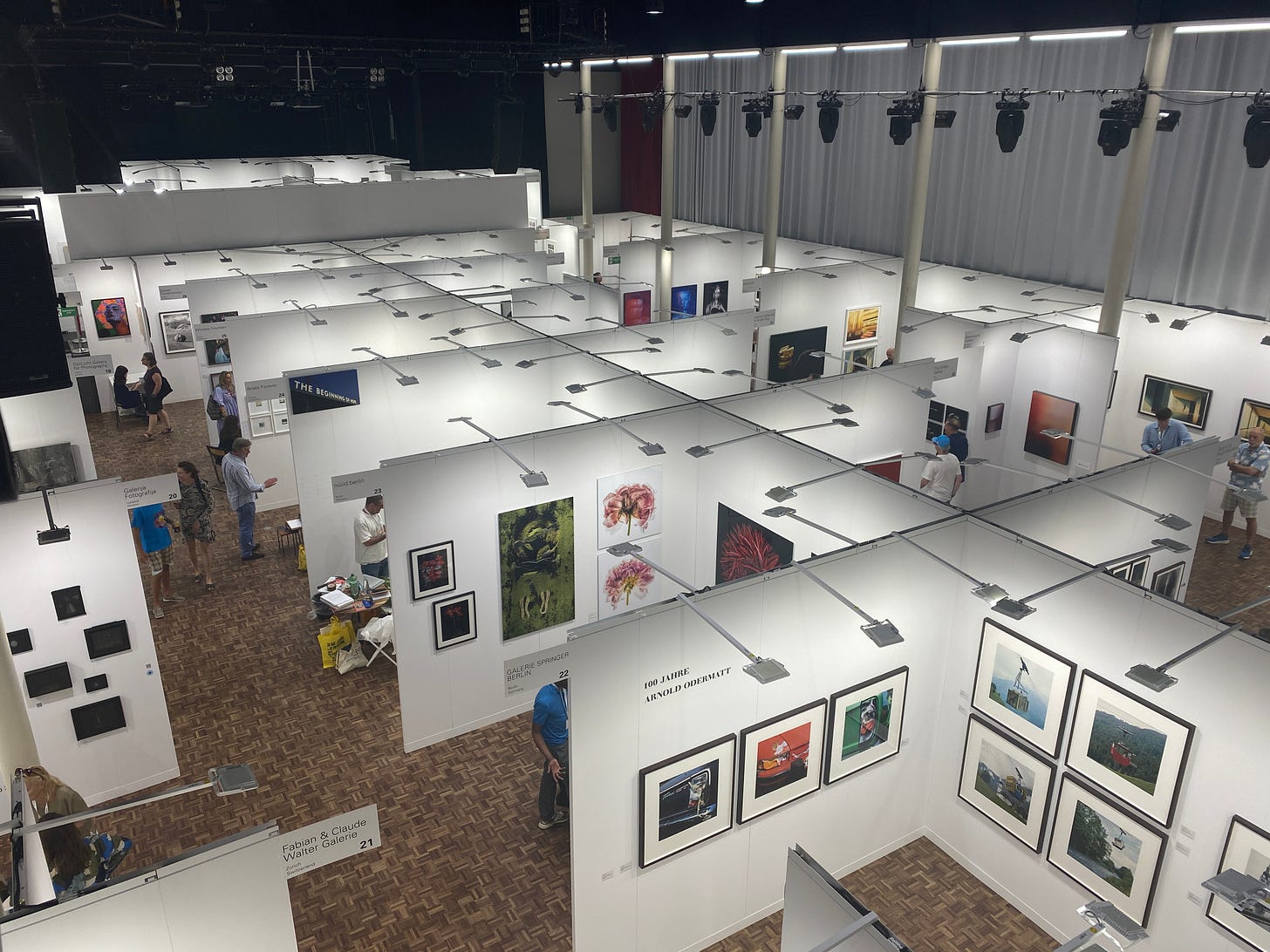Dreamy, Pretty, Emotional: Visit Photo Basel With Me 😍
6 works I liked & why art doesn't have to be intimidating
I’m in Basel right now for a couple of days of art galore. It’s the second time I’m here for art week, visiting a friend, taking it all in.
Basel in Summer is Magical
For a week, this wonderful city in Switzerland turns into an art h(e)aven. There are fairs, exhibitions, and events all over town. It’s a special atmosphere to be so deeply immersed into all things art. The timing of the fairs adds extra flair to it all. They’re always close to midsummer and there’s a very bearable lightness of being that imbues it all.
Last night, I went to photo basel, the photo fair. Coming into Basel, my train had arrived way late. It didn’t matter. The air was warm, the mood relaxed, and I decided to stretch my legs on the 20 minute walk to the fair.
On my way there, I watched people dressed in elegant European summer chic walking to the Art Basel awards. Two blocks down, I crossed the Rhine and watched people floating down the river, chatting animatedly. It’s the coexistence of these things that gives Basel its special atmosphere this time of the year. That, plus midsummer light in the evenings.
Navigating the Art World: It’s Not as Intimidating as it Seems
Last time I was here, I worked for a gallery at one of the fairs. Assisting a galerist, I got a very real behind the scenes look at how the art world works. What looks easy and elegant from the outside is the result of coordination, hard work, and great risk. Working in the art world is one of the most fun occupations there is. It’s wonderful, because you get exposed to new ideas and interesting people constantly.
It’s also a business. Gallerists are entrepreneurs as much as talent scouts and purveyors of cool and beauty.
The combination of all of these things creates a very interesting work environment. The reality of it is also that running a gallery is more like running a startup with their 10% success rates. Only so many make it in the long run. It’s a fleeting occupation. Visiting a fair is a snapshot in time, not only for artistic trends but also for the people you see there.
My experience working in art for a while (not just at the fair) has also taught me that it’s much less intimidating than it looks. Many people in art are very passionate about what they do–a great starting point for any connection. If you want to learn more about it, here’s a great book: 100 Secrets of the Art World: Everything You Always Wanted to Know from Artists, Collectors and Curators, but Were Afraid to Ask. [The title says it all.]
Now, onto photography.
Photos Everywhere! Visit Photo Basel With Me 😍
I was very, very excited to go to the photo fair. I got my photo diploma over ten years ago. After many years away from it, it’s very fun to plug back into it all. On top of that, there are very few spaces that are dedicated exclusively to photography. The one in Basel is the only event of its kind across all of German speaking Europe.
Photography is a really interesting medium. First, its access is quite democratic. Everyone has a camera these days and with that the opportunity to get the perfect shot. At least one of them. Then, there’s also the question of its reproducibility. Where paintings and sculptures are one-off creations, you can technically make as many copies of a photograph as you want.
So, what gives a photograph you buy value, when an artist can make 500 more copies of it? You solve that dilemma by limiting its print run.
Considering all that, you may imagine that photography has an interesting position in the art world. For example: Where the most expensive photograph ever sold changed owners for $12.4 million, the most expensive painting was $450.3 million. The works sold are hard to compare: a Man Ray photograph vs. a da Vinci painting. Yet, it gives you an idea about how these art forms are sought after in different ways.
My favorite thing about going to an art fair is to be moved by the colors, composition, emotion, idea behind, or beauty of a work. Philosophically, it’s also great to see how a medium like photography evolves. What are the trends? What are people thinking about?
The story of humanity and art continues to be written. How wonderful is that?
When you go to a fair, the proximity of the booths can also create a conversation between the art works. What usually lives on different corners of the planet, oceans apart, here turns into neighbors. At the fair, you can see the abstract work of a Japanese artist next to an iconic photograph by a great like Robert Mapplethorpe. A fair bridges space and time–for that alone they’re a great visit.
6 Really Cool Photographs I Saw at Photo Basel
An art fair is a little like a pictorial cornucopia. There’s a little bit of everything across styles and eras. You can see really famous artists next to up and coming ones. Everything is interesting in a way, if you let it be.
The most intriguing works to me were the abstract that pushed the boundaries of the medium.
Capturing the Vibes: Abstract Photography
Like this one by German artist Chris Tille. It’s a capture of the–literally!–vibes of the place where iconic paintings were created. The artist was there and explained to me that the one on the left below is where Monet painted his Water Lilies. Very cool!
Here’s another artist who focuses on color and vibes, for lack of a better word.
This is a work by Janik Bürgin, a Basel-based photographer. It was quite large in real life, probably 1m x1.5 m. Its colors immediately drew me in. Bürgin’s works seek to engage the viewer through emotion. I can’t tell you what exactly asked me to look at it, but look I did. And feel I did something.
If you remember what I shared with you above, about how you can produce an infinite number of copies of a photograph, you’ll find this interesting: This is a one-off.
All of the artist’s prints are unique. As such, he explores the relationship between painting and photography. It’s an interesting question to ask yourself whether there’s a difference between a one-off work made with photographic equipment or a paintbrush and an easel.
Blurring the Lines Between Photography and Painting
I also really liked this piece by Ukrainian artist Olena Zubach. Like the one above, it explores the boundaries between painting and photography. When you look at the details, it’s impossible to distinguish between whether the work has been painted or photographed.
This one by Lise Johansson from Copenhagen is similar. It feels pensive, painterly, and only photo-adjacent.
It reminds me of the light in a painting by Edward Hopper, actually: Morning Sun. Here it is.
The Magic of Nature
One more thing I noticed, a trend almost, was the abundance of nature-themed photographs all over the fair. There were shots of landscapes, leaves, and misty forests. I wonder whether this is a reflection of the growing trend to question our relationship with technology. Are we yearning for closer contact to nature?
Maybe. Nature as a subject of art offers a infinite inspiration. It never gets old.
These works by Rownak Bose, a Swiss-Indian artist, were very interesting. The galerist said they were made with a self-made camera device that was as big as the photograph itself. For context: the photos were about 80x80 cm.
How fun is it to dream up something like that? To be an artist is a great way to live, when you constantly send yourself on quests like these. Why not stand in a meadow with a huge box to capture nature?
The results are so vibrant!
If you want to get technical, the camera was a self-made camera obscura, harkening back to oldest forms of photography. Again, we’re closing the circle to investigating the boundaries of the medium, like in the works above.
And lastly, here is a photograph by Japanese artist Yasuhiro Ogawa, titled Rainy Window that is just dreamy. It’s like you’re there-there, gazing out into the forest.
Before I leave to look at more beautiful things today, here is a view of the photo fair from above: a well-lit maze for art. Perfect for getting lost in thought and beautiful things.
Have a lovely day,
Johanna












